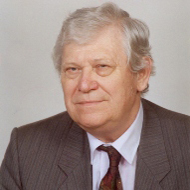In his childhood Jan Truhlar was living in the village of Planany near the town of Kolin and it was here that he started to play the piano and make his first attempts at composing. From 1948 to 1953 he attended the Prague Conservatoire, studying guitar with Stepan Urban and composition with Frantisek Picha. In the four years that followed he continued his study of composition at the Prague Music Academy under Pavel Borkovec, writing as his graduation work a Concerto for Flute. Guitar and Orchestra. From 1962 to 1968 he worked as co-repetiteur at the Jonas-Zaborsky Theatre in Presov and for the last two years of this period he also held a teaching post at the Conservatoire in Kosice. He then retumed to Prague where, in 1975, he began teaching at the Conservatoire. Since 1981 he was living in northern Austria as a guitar, piano and music theory teacher at the music school in Perg.
Since his earliest days as a composer, Jan Truhlar had given great prominence to the guitar, both as a solo and as a concerto instrument and had also explored its potential in a wide variety of chamber combinations. For example, his Impromptu for guitar (1964), which was recorded by Supraphon, was a highly succesful work. In 1963 his Quartet for flute, violin, cello and guitar 0p.14 won first prize and gold medal at the Coup Intemational de la Guitare organized by ORF Paris. At the premiere the solo guitar part was played by Konrad Ragosnigg. When the same competition was next held, Truhlar' s Second Concerto for guitar and orchestra won second prize (the first prize was not awarded). The solo part at the premiere of this work was played by Narcissio Yepez.
Jan Truhlar s interest in the accordion was inspired by the playing of Vladimir Cuchran, to whom he dedicated the Sonata 0p.24. This work was quickly followed by a series of compositions for accordion both in a solo capacity and in combination with other instruments including, amongst others, the guitar. In 1989 he was a prize winner in the competition Le prix de l' Academie d' Accordeon des Alpes held in Digne-les-Bains, with his composition Resonances for viola, vibraphone and accordion. Jan Truhlar has written a series of accordion works for accordion competitions both at home and abroad. He has himself described the origin of one of these compositions in the following way: "...Professor Vlach from the Prague Conservatoire asked me for the music for the Prelude and Chorale for an accordion competition. Because I did not have this, I promised to write a new work and that is how Mosaic came to be written. It is, in fact, a group of chords built up from a chosen series and played in various rhythms and arrangements...so as to produce an effective work for competition purposes... I was so captivated by this exercise. However, that I wanted then, by incorporating also the imaginary tones described by Karel Janecek (a Czech music theorist and composer) to bring the problem of the execution of complex chords to public attention in a small instrumental combination. I therefore arranged Mosaic for woodwind quintet with certain changes in range and in specifc themes. Because the work was rather short. I added an introductory slow movement".
As for the other genres which Truhlar had written, there were some remarkable vocal works from earlier period of his creativity mostly. Of these Zatichol dom for female choir was honoured, for example, with the award of the Osvetovy ustav in Bratislava. Not surprisingly there were also a whole series of educational pieces which stemmed from Truhlar's own teaching activities.
As far as his mode of musical expression is concerned, Truhlar early on was inspired by the influence of Romanticism to move away from diatonic harmony to atonality. After a temporary return to Neoclassicism during his studies and in the years immediately following his graduation, in the 1960s he experimented with the possibilities of the twelve-tone scale, serialism and aleatoric techniques. Truhlar' s later works demonstrated a preoccupation with serial harmony and harmonic content and with the attempt to apply in practice the basic theoretical concepts expounded by Karel Janecek. His primary method of composition was that of highly specific aleatory in which, however, traditional forms, rhythms and unity of metre were maintained to some extent.

